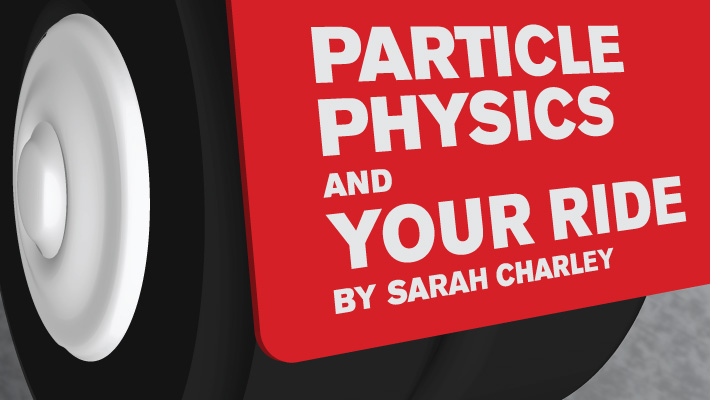
Particle physics and your ride
Metal products contain microscopic stresses that can grow into bigger problems. How engineers choose to manage these stresses makes all the difference.
Particle physics experiments allow scientists to probe the heart of matter, track mysterious entities such as dark photons and, now, predict the lifetime of your tractor or car.
They do this with a subatomic stress test.
Companies including John Deere, Metalsa and General Motors can evaluate the components of their products with equipment at the High Temperature Material Laboratory, or HTML, at Oak Ridge National Laboratory. This type of analysis helps engineers improve product durability and increase the efficiency of product testing—improvements that trickle down to customers in the form of lower prices and more reliable, fuel-efficient vehicles.
During the intense heating, molding, hammering and pounding that metal alloys endure in the production process, tiny imperfections called residual stresses form. As the metal undergoes wear and tear during use, these stresses can turn into full-fledged cracks and breaks.
“By knowing when and where stresses are going to occur, companies can tailor their stress relief processes to the product. This saves manufacturers time and money,” says Edgar Lara-Curzio, director of the HTML. “We provide industry access to unique instrumentation and an experienced operations staff.”
Neutron sources have been around for decades, but their application to commercial stress-testing was only fully realized in 1991. The Neutron Residual Stress Facility at the HTML was established in 1993 and is a one-of-a-kind facility. It uses the world’s most intense neutron beam to probe materials like iron and steel.
To find and quantify residual stresses, engineers bombard the test material with neutrons produced via nuclear fission. These neutrons penetrate the test material until they bump into an atomic nucleus and ricochet into a detector. Scientists then use this data to reconstruct a picture of the material’s atomic structure, enabling engineers to map the structural changes that arise during heating, cooling and molding processes.
Engineers from John Deere visited this facility in 2010 to validate their computer simulation models for predicting residual stress.
“Residual stresses affect the durability of our product,” says John Deere engineer Eric Johnson. “We have to meet customer expectations and make our product last. But we also don’t want to overdesign the product and make it less efficient and more expensive. Knowing the residual stress state helps us determine the right balance between efficiency, durability and cost.”
Metalsa, an automotive structures company that produces frames, chassis and engine cradles for a variety of light and commercial vehicles, approached Oak Ridge in late 2007 looking for a way to reduce the weight of their big-rig-truck chassis.
“The less a truck weighs, the more it can carry as payload, so we have a lot of motivation to reduce the weight of our product,” says Sean Fleming, Metalsa vice president of technology for commercial vehicles.
Metalsa uses different methods to make holes in a truck chassis to reduce its weight. The company wanted to know what effect each technique had on the structural stability of the chassis and which produced the best results. Their findings were better than expected.
“We found that when we punched the holes in the steel, it created beneficial compressive residual stresses,” Fleming says. “These types of stresses actually improve the strength and durability of the chassis and showed that we could safely reduce the chassis weight by about 100 to 200 pounds.”
Lara-Curzio and his team are now in the process of restructuring the program to ensure these unique tools continue to be available to industry, despite a recent reduction in funding. As most companies do not otherwise have access to this type of equipment, Lara-Curzio says, the program has a tremendous benefit for commercial engineering.
The industrial researchers agree. “The HTML staff was great,” Johnson says. “They helped us analyze and interpret the raw data and we even collaborated on a scientific paper, ‘A Benchmark Study on Casting Residual Stresses.’ This research is not only applicable to us; it is applicable to anyone who uses casting to make parts.”










